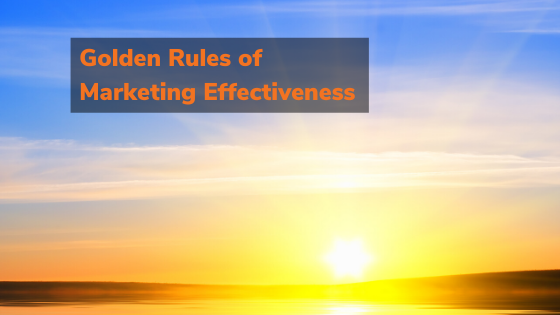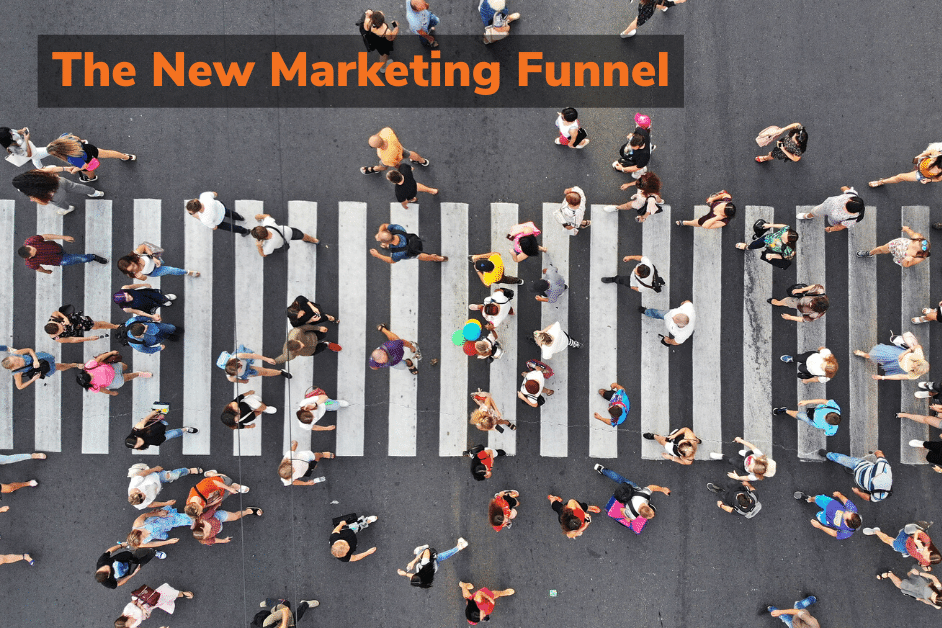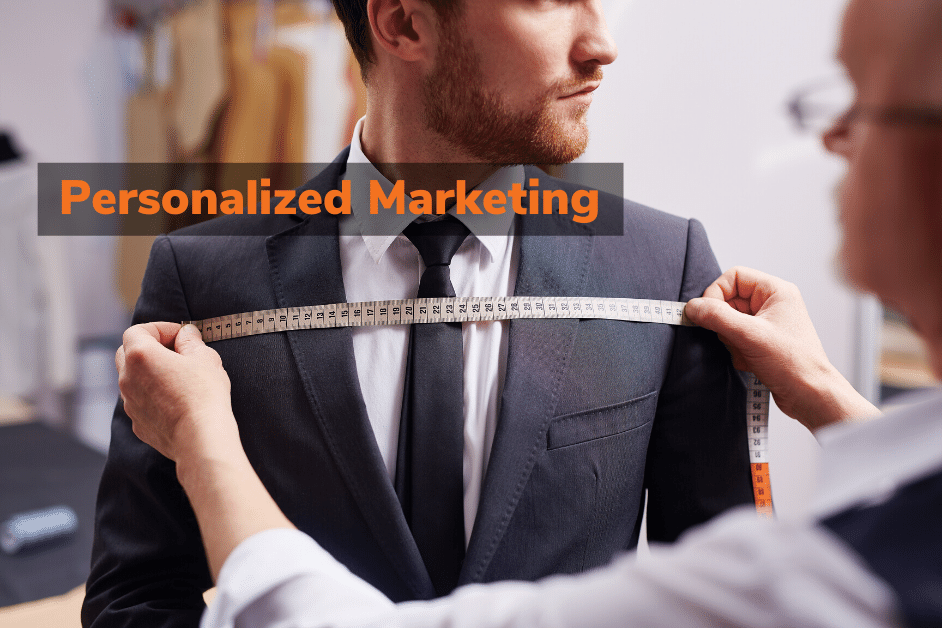I think #DonaldTrump is the greatest #marketer that has ever lived.
And I bet this isn’t the first time you’ve heard of his marketing prowess.
To be clear, this case study is not about Donald Trump, the Politician; this is about Donald Trump, the Marketing Genius. So, forget your politics; put your marketer’s hat on and think about this objectively.
Trump may not be a self-made man, but he is a self-made #brand. Whatever our politics may be, that much is true.
Humour me.
He is a human brand. Unlike entertainment and sports celebrities whose talent and conscious lifestyle fuel their image, Trump’s brand is entirely cultivated.
Branding is his superpower.
Donald J. Trump understands branding like Obi-Wan Kenobi knew lightsaber skills.
He studied economics and finance at Wharton, not marketing. He didn’t need to; he was born with this marketing superpower. To his credit, he didn’t take this gift for granted. He practiced branding skills, experimenting and optimizing in real-time with direct feedback from his followers, fans, detractors and media.
Not only can he brand himself, but he can also brand his opponents. Once he brands you, it sticks—”Sleepy Joe,” “Mini Mike”, “Low Energy Jeb.”[i] I could go on, but you get the point.
He brands his fans too. They’re all “great people.”
Base your message on a grain of truth; keep it short; keep it catchy.
A fundamental rule of branding.
What was North Korea’s comeback to “Rocket Man”? They called Trump a “dotard,” [ii]which means ‘an old person, exhibiting a decline in mental faculties.
Not so sticky, eh? Taking on Trump in a branding battle is like bringing at a toy knife to a gunfight.
Once he has given you a moniker, he will repeat it along with his key messages frequently, whether an opportunity presents itself or not. “Crooked Hillary,” “Perfect letter,” “Fake News.” [iii]
What are the three laws of branding? Consistency, reach, and frequency.
D.J.T. is the Michael Jordan of marketing.
Why pay for media when you can control it?
Trump does not have to pay for media, he can get it for free whenever or wherever he wants. POTUS is the master of Newsjacking.
You’d say, “of course, he can get free media. He’s is the President of the United States!”
Sure, that helps, but he could control the media even before he formally declared his candidacy for President. Remember the Obama birth certificate year-long news cycle?
That’s how it’s done.
Throw the media a bone by saying something provocative or outrageous.
Let the competition defend itself. Watch the media frenzy.
POTUS is the Wayne Gretzky of newscasting.
Any publicity is good publicity.
Oscar Wilde once remarked that “the only thing worse than being talked about is not being talked about.” You cannot help but talk about Trump, from the lunchroom to cocktail parties, to Christmas dinners.
How much free publicity has Trump managed to accumulate?
The New York Times estimates Trump rode to the White House on $2 billion worth of free media.[iv] Some estimates are higher. For context, Apple, one of the world’s biggest electronics brands, spent $1.8 billion in advertising globally, not just in the U.S. [v]
Since becoming President, his reach and frequency have amplified and multiplied many folds. He has monopolized every medium in every country that has internet.
No further proof is required to prove Trump’s media dominance, but I did a Google search for fun to compare the 45th and 44th President. Unsurprisingly, Trump wins hands down over Obama by a factor of 3.
These raw search results are a mix of reliable and unreliable sources. While they are not an accurate measure of notability, they are indicative.
“Obama” 472,000,000 results. “Trump” 1,280,000,000 results.
“Donald Trump” 844,000,000” “Barak Obama” 144,000,000”
Trump beats Obama by over a billion more search results. He also beats his holiness’ Pope Francis and the Dalai Lama, as well as superstar influencer Opera Winfrey and celebrities like Lady Gaga, Beyoncé, and Taylor Swift combined.
Only Queen Elizabeth comes close, but she has reigned for over 68 years and has subjects across the commonwealth. To be fair, Trump is still in his first term and “rules” just one country.
Measure and brag
Like any good marketer, Trump keeps a keen eye on his poll numbers, approval ratings, and the competition. He never fails to point out his poll numbers, the size of his rallies and tv ratings on camera as an endorsement of his popularity and “greatness.”
Marketers use a tactical variation of this same “bragging” strategy to create the aura of demand—”sold out,” “offer open till stocks last,” and “back by popular demand.” Watching shoppers queuing up the night before to be the first to buy a new Apple product is a similar “bragging” strategy to amplify demand.
Takeaway: Perception of success fuels success. Your brand’s perception can create demand, but the brand must deliver on its promise.
And the brand delivered on his promises. Trump has “kept many more promises than he has made.” [vi]
Trump has no equal in deploying the “bragging” strategy. Trump is better at this than Roger Federer is at tennis.
How did Trump become a brand?
He followed his father into the real estate world, building and acquiring skyscrapers, casinos, hotels and golf courses.
From early on, Trump has remained focused on building the TRUMP brand as an icon of corporate success, wealth, and an opulent lifestyle.
TRUMP is the brand of his luxury properties, products and services from resorts and casinos to wineries, steaks and, infamously, a university. His brand supports his properties, and his lavish properties support his brand.
He has authored over 10 books like: “The Art of the Deal,” “Think Big and Kick Ass in Business and Life,” “Think Like a Billionaire,” “‘Surviving at the Top,” “Think Like a Champion,” “Trump 101: The Way to Success”, to name just a few.

Notice the book titles, they clearly support his carefully crafted ‘savvy, self-made billionaire businessman’ image. Even his reality T.V. show “The Apprentice” cultivated the same image, and the ‘Miss Universe’ pageant adds some glitz and glamour to his brand.
Trump is a hard-working marketer, always shinning his brand.
As a young man, he would call radio stations pretending to be his own publicist.
During the pandemic, he got Treasury to print his name on stimulus checks. Those checks are his brand’s touchpoints in American homes!
Trump will not miss a photo opportunity or a chance to create one. A recent example was the one outside St. John’s Church[vii]
He is a prolific content publisher and social media guru. Trump is continuously engaging his audience, even at night, with a tweet or two or a storm.
Every marketer and thought leader should learn from this.
Everything Trump does is in support of his brand.
Trump’s net worth is estimated to be around US$3 billion despite six bankruptcies. He is not what his billionaire peers would call a superstar businessman.
However, his genius shines “bigly” in branding and licensing. Which is why there are more buildings around the world branded TRUMP than he owns.
He pegs the TRUMP brand’s value at $4 billion.[viii] Whatever the real TRUMP brand value is, it is easily worth more than the sum of his tangible assets, like in the case of Coke, Apple and Louis Vuitton.
His brand value was more than enough to let him slide down a golden escalator and declare his candidacy for the American presidency.
That the power of branding.
How did he get there? His share of voice (SOV) has always exceeded his market share.
A proven strategy. According to a study by Les Binet and Peter Field, for the I.P.A. Effectiveness Awards, brands that invest in ‘excess share of voice’ (ESOV), defined as SOV above the business’s market share, are likely to see long-term base sales growth.[ix]
Licensing Maestro
Companies spend millions of their marketing dollars to put their name on iconic buildings, arenas, hospitals, and education and research institutions. The price tag can range from a few hundred thousand for a library a year to about forty million for a sports arena. MetLife paid about $625 for the MetLife field.[x] Canada’s Scotiabank paid USD 638 million for a 20-year deal to brand the home of the Raptors and the Leafs.[xi]
On the other hand, Trump gets paid a million or more for the use of his name on luxurious and iconic buildings that he does not own.
Here’s the brand mastery, these opulent sky-high TRUMP branded billboards not only pay Trump but also promote his image for free.
That’s the Art of The Deal. Genius eh? Trump is better at branding than Bruce Lee was at Kungfu.

As per Forbes, Trump is the 275th richest person in America,[xii] yet he is better known in the global mainstream than at least 270 of his wealthier peers. Ask a citizen of an obscure country like Kiribati if they have heard of Trump, and you’d be surprised by the awareness and recall.
Crazy loyal customers
The loyalty of his base is unshakeable. “He could shoot someone on New York’s Fifth Avenue, and still not lose voters.” [xiii]
A marketer would give their left arm for this kind of brand loyalty.
So how does Trump command this Rockstar like adulation? By staying true to his brand promise
Trump is no different as a president than he was as a candidate on the campaign trail. With Trump, it is WYSIWYG. His voters like his straight talk. They voted for him in to shake things up, and he has done just that and more.
Like any good marketer, Trump built his campaign promises on an intimate understanding of a sizable segment’s frustrations.
Enter Cambridge Analytica. Exit Hillary Clinton.
He used “big data” to find a population segment that was missing a voice in federal politics. Non-college educated, low income, conservative, older, white males.
Trump heard and addressed their frustrations. Immigration (“build a wall”), Terrorism (“Muslim ban”), Tax Cuts, Job losses to China, trade and climate deals.[xiv]
Hyper-focus
Trump is exclusively focused on his audience, and he knows which buttons to press and when. He is talking to his audience, even when he is talking to others. Some call this a “dog whistle”. Marketers call it targeting.
He can get his message across to his audience in the language they understand. Unlike his scholarly and “elitist” predecessor, Trump speaks like everybody else. He uses simple words like “great,” “big,” “nice,” and “stupid” in bite-sized headlines with no unique words or difficult concepts. His Flesch-Kincaid score is the highest of any American president; at best, you only need a fifth-grade level of education to understand him. [xv]
To build a brand, you need a relevant and consistent message that you frequently echo in front of as many members of your audience as possible.
Trump applies these messaging, reach and frequency principles like the Yoda of Marketing.
Staying true to the brand
While I was doing research for this article, two Whitehouse staff tested positive for COVID-19; those not in self-quarantine were to wear masks. Trump did not wear a mask, although the fatality rate for someone in their 70s is 28 times that of someone in their 40s.[xvi]
Wearing a mask would dilute his message and project fear, a trait not in sync with Trump’s brand personality. He even took on the medical establishment by advocating for Hydroxychloroquine against their advice, and because he did, he backed it up by taking it. End of argument.
Like Trump, a brand must be belief-driven. A study by @Edelman shows that the majority of consumers buy on beliefs. They expect brands to reveal where they stand on social, ethical or political issues and back it up with meaningful action. 64% of consumers will buy or boycott a brand solely based on its position or political issues.[xvii]
Trump knows his:
#marketingfunnel and #touchpoints – What to say, where, when and how through the customer journey.
#messaging – Catchy zingers #SleepyJoe and a core message like Make. America Great Again (#MAGA), A complete message in four simple words. It identifies the problem and presents the solution.
#Segmentation and #profiling – Mexicans, Muslims and Immigrants
#Bigdata – Two words, Cambridge Analytica.
#Media — #FakeNews, #TheFailingNewYorkTimes.
#Social Media – His tweets at an average of over 28 tweets a day.[xviii] Check out Trump’s tweeting stats at NYTimes.com. [xix]
#Provocative marketing — #BuildTheWall, #LockHerUp.
#Earnedmedia – see Newsjacking.
#Newsjacking – CNN alone gave 430% more airtime to Trump’s campaign compared to Obama’s.
#Spin – Remember the “sarcastic” disinfectant and light prescription?
#Crisiscommunication — Deflect blame. “I barely know the guy,” “the W.H.O.’s fault,” “Perfect letter,” “Russia Hoax.” “No Collusion”
#Guerrillamarketing – COVID press briefings.
#Experientialmarketing, we’ve seen clips of his rallies, they are scary good!
#Reciprocalmarketing – If you promote Trump, he endorses you, “Great people,” “Terrific job.” If you don’t, you are branded as “Doing a poor job,” “Never Trumper,” or “FakeNews.”
#Geotargeting, focusing where there is the best chance to win, “Wisconsin,” “Michigan.”
#Omnichannel – He is everywhere. I don’t remember a day in the last four years without contact with the TRUMP brand, do you?
Here is the ultimate proof of his marketing genius.
Trump can do what even advertising legends like #davidogilvy #billbernbach and #leoburnett may have found challenging.
Unlike them, Trump can sell an obviously flawed product: himself.
The only thing Trump is guilty of, from a marketing perspective, is overselling his product and perhaps embellishing the truth. But then, who can cast the first stone?
Here are some of Trump’s proven marketing strategies.
- Invest in your brand. It is not an expense; it is an investment that grows and pays back by supporting sales over the long term.
- Know your audience. Utilize both operational and experience data to identify the best customer segment for your brand and develop robust data-driven profiles.
- Stay focused on your segment and message, even at the risk of alienating others.
- Keep it simple; simple messages and tactics are stickier than complex.
- Be unexpected – It is easier to stand out by being different, and it also helps earn media impressions.
- Tap into emotions. In an increasing parity landscape, personalize your message at scale.
- Do more inbound marketing; it is less expensive than outbound marketing.
- Use repetition – Be consistent with your message and repeat it frequently every chance you get.
- Omnichannel works better than multichannel. Customers expect their journey to be seamless across your touchpoints and channels.
- Superlatives claims are useful if you can back them up believably.
The problem with a human brand is that, when the human fails, the brand fails.
Since becoming President, his politics, leadership style, and accusations of being a sexist and racist have negatively impacted his brand. Some landlords have taken down the TRUMP name from their buildings for “security” reasons.
Trump was a brand before he became President, and he is President because of it. Whether he wins a second term or not, his marketing genius is beyond doubt.
This essay is a work in progress, and I need your help to build this into a more robust case study for future marketers to learn from.
[i] https://www.rollcall.com/2018/08/02/top-10-trump-nicknames-and-why-they-stick-to-his-foes/
[ii] https://www.nytimes.com/2019/12/05/world/asia/north-korea-trump-dotard.html
[iii] https://thehill.com/homenews/administration/421948-18-nicknames-trump-invented-in-2018
[iv] https://www.nytimes.com/2016/03/16/upshot/measuring-donald-trumps-mammoth-advantage-in-free-media.html
[v] https://www.campaignlive.com/article/apple-ad-spend-rises-50-record-18-billion/1370742
[vi] https://www.newsweek.com/trump-tells-rally-hes-kept-more-promises-hes-made-1198181
[vii] https://www.theatlantic.com/politics/archive/2020/06/trumps-biblical-spectacle-outside-st-johns-church/612529/
[viii] https://qz.com/1561523/donald-trump-says-brand-value-doubled-his-net-worth-by-4-billion/
[ix] https://effworks.co.uk/wp-content/uploads/2017/10/MEDIA_IN_FOCUS_FINAL_PDF_909.pdf
[x] https://www.signsofthetimes.com/content/metlife-inks-400-million-naming-rights-deal-meadowlands-stadium
[xi] https://globalnews.ca/news/3708528/scotiabank-air-canada-centre-naming-rights/
[xii] https://www.forbes.com/sites/chasewithorn/2019/10/02/donald-trump-falls-another-16-spots-on-the-forbes-400-list/#2e069aac291b
[xiii] https://www.theguardian.com/us-news/2016/jan/24/donald-trump-says-he-could-shoot-somebody-and-still-not-lose-voters
[xiv] https://www.bbc.com/news/world-us-canada-37982000
[xv] https://www.newsweek.com/trump-fire-and-fury-smart-genius-obama-774169
[xvi] https://www.statnews.com/2020/03/30/what-explains-coronavirus-lethality-for-elderly/
[xvii] https://www.edelman.com/news-awards/two-thirds-consumers-worldwide-now-buy-beliefs
[xviii] https://www.statista.com/chart/19561/total-number-of-tweets-from-donald-trump/
[xix] https://www.nytimes.com/interactive/2019/11/02/us/politics/trump-twitter-presidency.html











